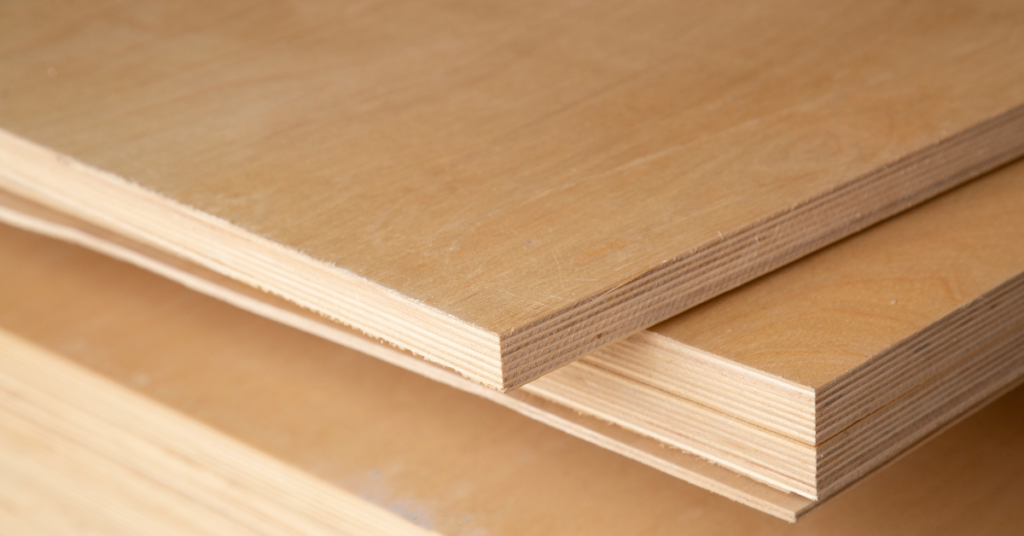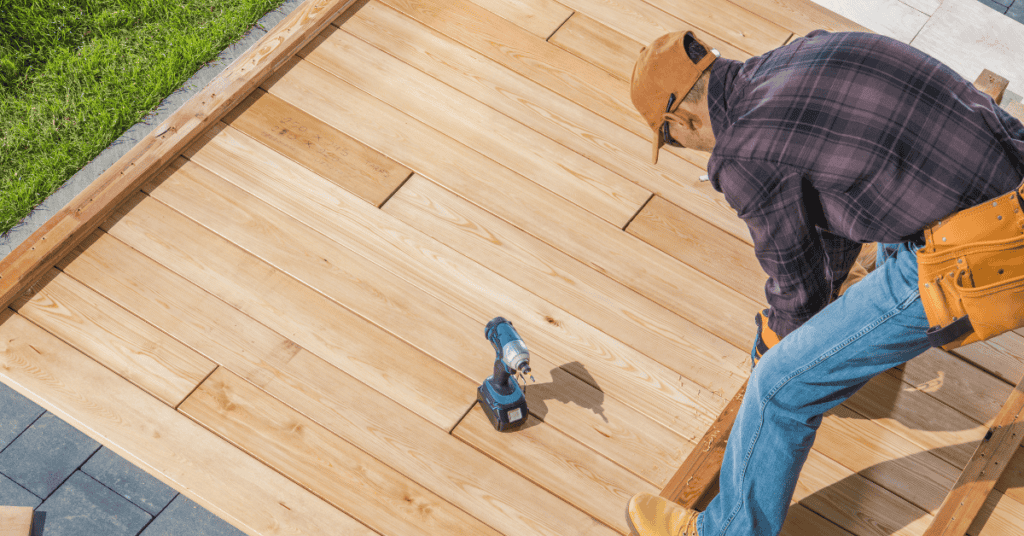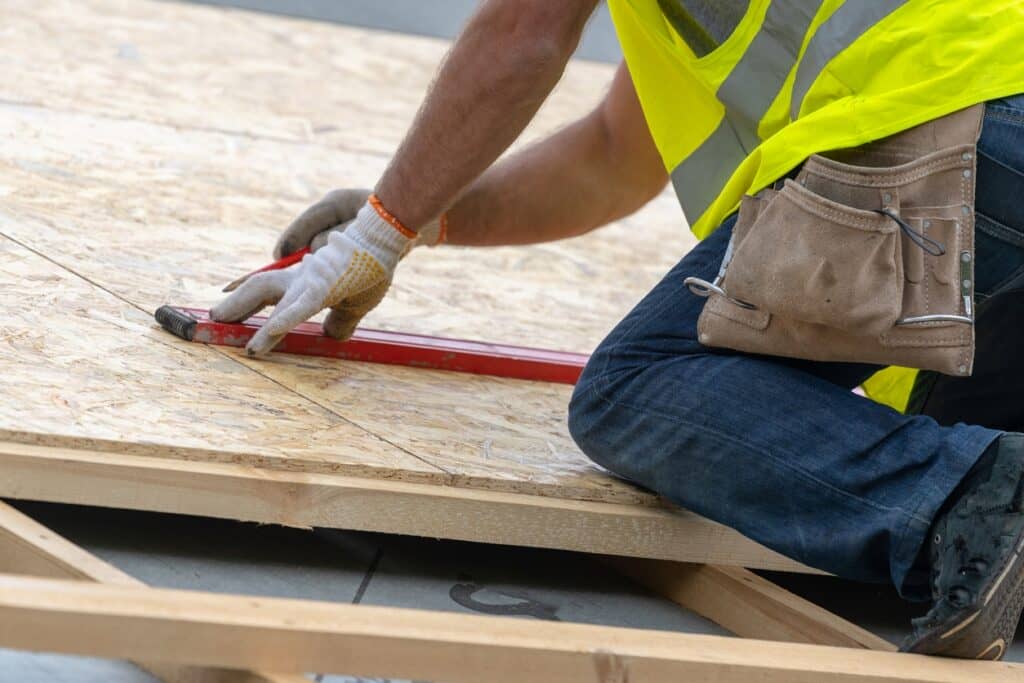Plywood has become a mainstay in construction due to its versatility and affordability, with different plywood types providing unique features. One of the many types of plywood is CDX, a construction-grade plywood. Construction-grade plywoods sport structural stability and are ideal for sidings, flooring, and roofing.
While CDX plywood has several other features like excellent moisture resistance qualities, its strength and versatility are getting the most attention. For most construction purposes, these qualities are essentials that will determine the longevity of your project. Like other plywood, CDX is manufactured by bonding different materials, affecting its strength and versatility.
How solid and versatile is CDX? It’s a popular question among many as they decide on the type of wood to utilize.
Follow this guide as we dissect CDX plywood to see actual capacity. While we’re at it, it is only fitting to start with the basics – what is CDX plywood?
What is CDX Plywood?
For those who aren’t aware of what CDX plywood stands for, I will explain it as best I can in this section.
For starters, plywood has a grading system from A to D. At grade A, the appearance of the plywood is at its finest and is least at grade D.
The first two letters, “CD,” represent the grade levels C and D used for this type of plywood. While the “X” stands for exposure and represents the type of glue used to hold the veneers, contrary to the belief that it means “exterior.” The exposure glue means it can be used outdoors. Since CDX combines C and D plywood, one side is grade C and the other is D.
Exposure glue helps the plywood withstand moisture, making it water-resistant but not waterproof. The patchy appearance of CDX plywood makes it easy to spot on the shelf. The grade puts CDX at an economic advantage, another reason it is widely used in construction.
The appearance of the CDX plywood will be at the closest end of the spectrum, but this will have little to do with its quality. Thankfully, the most prevalent CDX uses value quality over appearance.
Types of CDX Plywood

There are two types of CDX plywood based on their uses: CDX sheathing and CDX siding. The distinctions between the two make it easier to decide depending on the proposed usage. Without further ado, here are the two types of CDX plywood:
1. CDX Sheathing
CDX Sheathing plywood is the most common of the two types, with usage focusing on framing walls, roofs, and shed floors. It has a high strength-to-weight ratio giving boards excellent durability despite their thickness.
CDX Sheathing boards are installed as the first covering before it is layered with other materials making it less visible. Since they are often covered with another material, they can afford to be rough with blemishes like marks and stains.
2. CDX Siding
While less popular than the sheathing type, this CDX siding plywood has a willing market. It can provide an exterior finish to walls, floors, and roofs. CDX siding is the last covering on the walls, which are the most visible when installed.
They are the final finish, so their appearance is pleasing, with little to no blemishes. When it comes to quality, it shares a similar durability as that of the sheathing. However, this will vary significantly on its usage and factors exposed to it.
Understanding CDX Plywood Strength

We’ve mentioned the four grading systems for plywood, including the specific grades related to the CDX. One face is grade C plywood, while the back is grade D plywood which is rougher and with more defects than grade C. While the faces are softwoods, the center core comprises a hardwood material.
CDX is a standard construction plywood which illustrates the strength it possesses. It is known for its stability, helped by the numerous layers of wood veneer glued together. In manufacturing, the wood veneer grains are alternated at right angles to prevent warping and improve durability.
Sporting impressive strength due to the joining pattern means its resistance to bending wrap wood and other forces is high. Its resistance to bending and impacts makes it a tremendous load-carrying board. Its affordability and decent strength make it a unique choice for many.
Construction projects with durability and strength at the forefront always use CDX plywood. However, you should avoid using CDX for ornamental projects that require a refined appearance. Check the anticipated load, life span, and building laws in your locality before you select the CDX plywood to install.
The Versatility of CDX Plywood

There are several ways to use this CDX plywood, showing its versatility. The board’s structure makes it suitable for both outdoor and indoor use. For outdoor use, the most common use is siding of the base and sheathing exterior walls. Using this plywood indoors, however, is more straightforward as it is excellent for framing, subflooring, and more.
Its versatility expands to its usage in moist areas since it has moisture resistance. It should not be confused with being waterproof, as prolonged exposure will cause the wood to rot, among other damages.
While the exposure glue holding the boards together shows it can withstand some adverse conditions like a bit of moisture, it should only be used where the board is exposed to humidity for a short time. You can improve its durability and make it possible to be used in moist areas by coating it with a water-repellent finish. The finish will prevent moisture from penetrating the plywood.
Painting and finishing with stains will improve the versatility of the CDX plywood. Although, you may need to smoothen the rough CDX face by sanding and filling the holes to ensure proper finish layering.
Pros And Cons of CDX Plywood
How about some direct reasons for using CDX plywood and worries to consider? Here are the advantages and disadvantages of CDX plywood:
Pros
- Durable: The manufacturing process where the sheets are joined in alternating right angles and the choice of exposure glue binding the veneers helps its durability.
- Affordable: When you compare the cost of the CDX plywood with other similar boards, you will notice a good price difference between them. Its affordability stems from its C and D grade combination.
- Good resistance to cracking and twisting: The alternating sheet arrangement also significantly contributes to the CDX resistance to cracking and twisting.
- Easy to use: You can cut, join, and finish CDX plywood without stress. It is due to the easy-to-use plywood quality.
Cons
- Prone to insect attacks: CDX is often prone to attacks from insects unless you have a layer with coatings that would keep insects away.
- The surface can peel off: Peeling off is common if the CDX is unpainted or unfinished.
- It is heavy when wet: Keep it away from moisture as the weight significantly increases when it absorbs water.
FAQ’s
Check out this section if you have any lingering questions about CDX plywood. It has the answers to some of the frequently asked questions.
Ans: Explore in CDX does not mean it is pressure treated. It only means you can have minimal exposure to moisture without damage. On the other hand, pressure-treated plywood can withstand prolonged exposure without stress.
Ans: CDX and CD use grade C and D plywood for their face and back layers. Their difference lies in their glue. While exposure glue holds the veneers in a CDX combination, CD plywood uses regular glue.
Ans: CDX plywood is water resistant due to the exposure binding agent, but it is not waterproof. It’ll soak moisture and increase weight if exposed to a humid environment for a while.
Summary
CDX plywood’s strength is helped by its construction process, which includes arranging the sheets at right angles to each other and the type of glue. While the plywood has good versatility, you can unlock more uses by painting and coating it with finishes that improve its moisture and weather resistance.
There are many ways to use CDX plywood, including outdoors and indoors. It is also an affordable choice for people on a strict budget. Consider this plywood if you’re looking for an affordable option with good enough strength and extensive usage.

